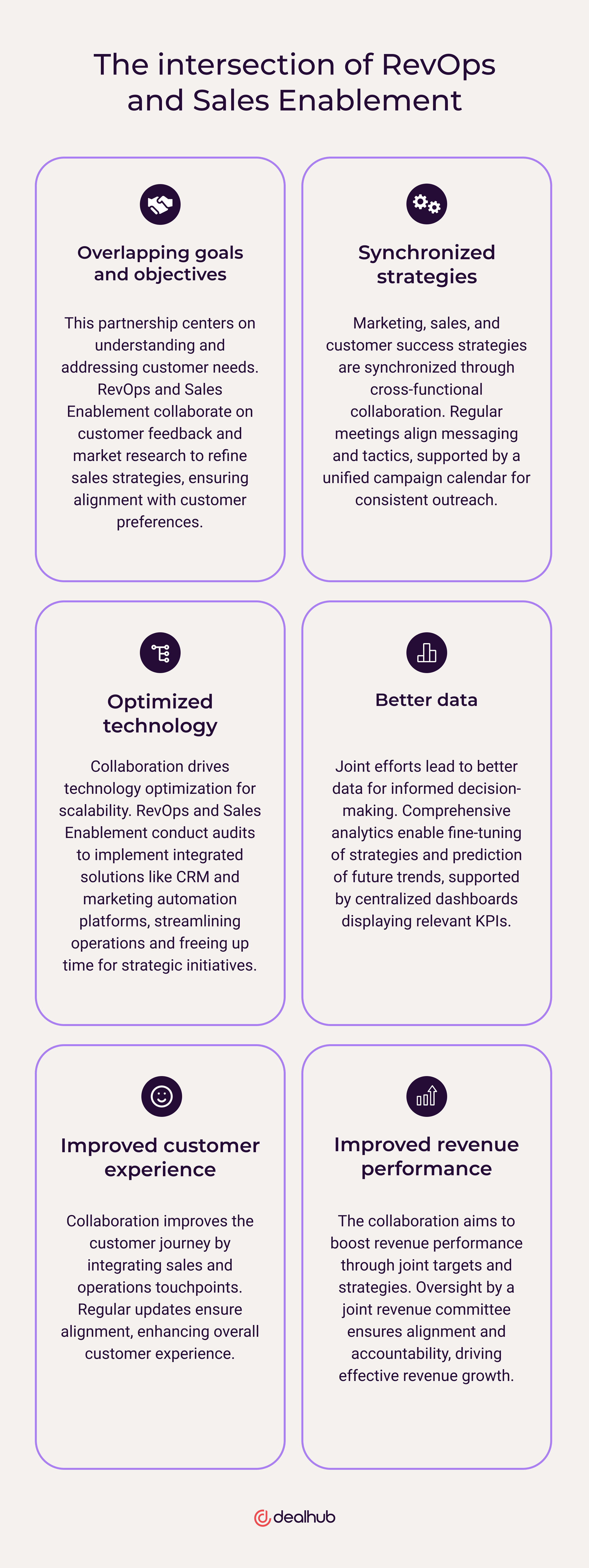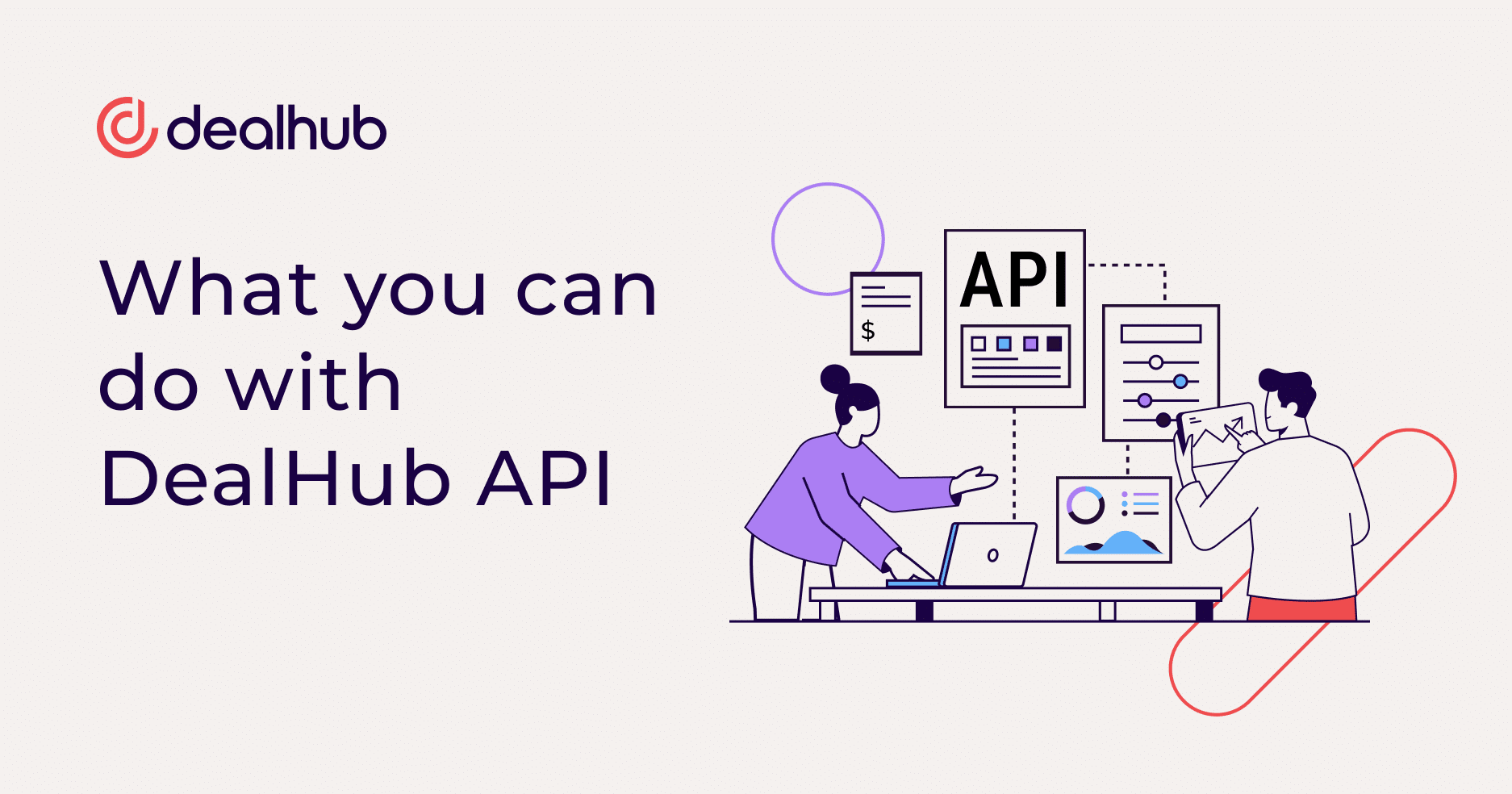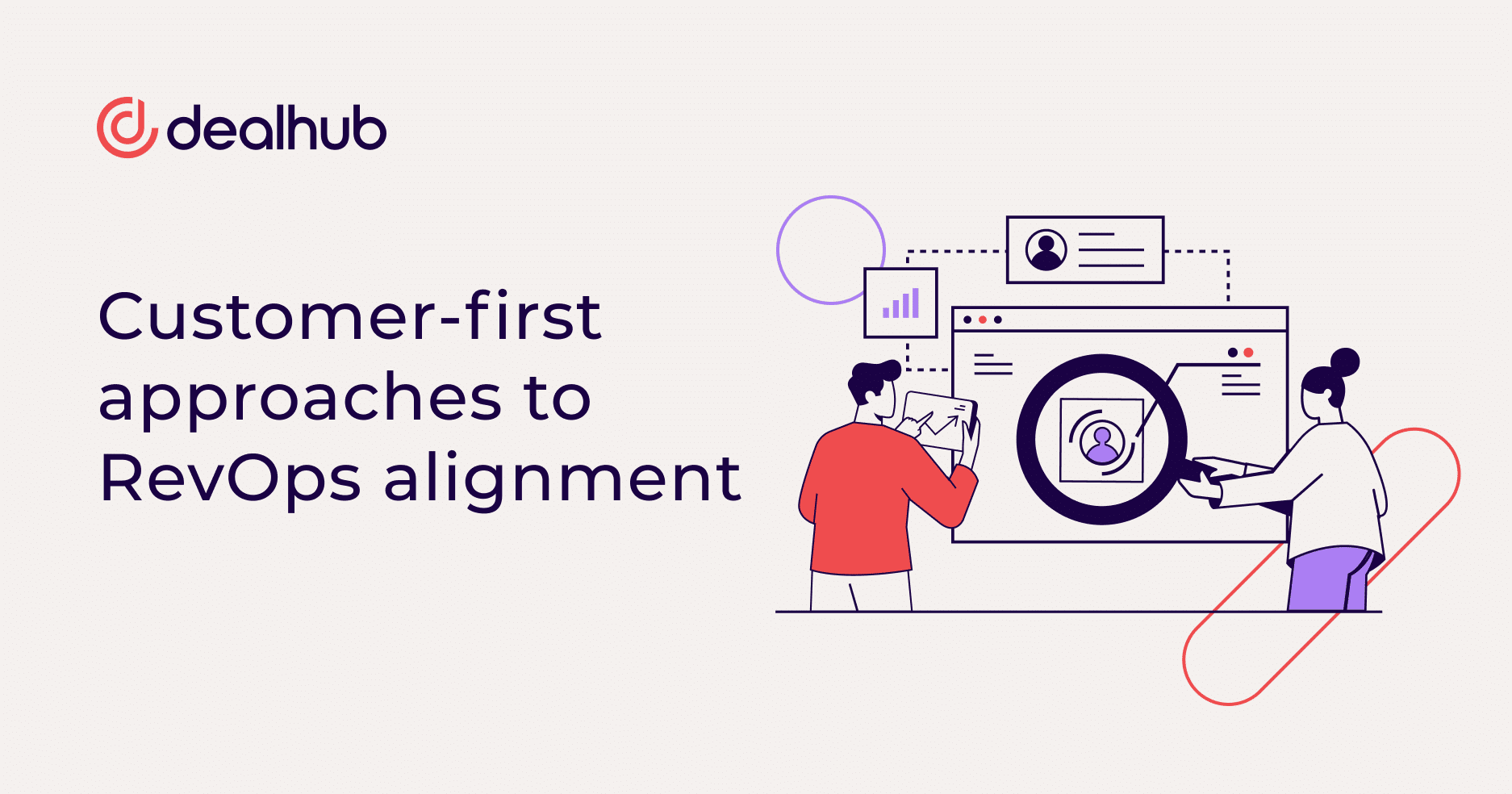Understanding how this team-up works is key for any business looking to stand out and succeed in today’s competitive market. In this blog, we’ll uncover each team’s unique roles, how their collaboration fuels business growth, and practical strategies for fostering a strong RevOps and Sales Enablement partnership.
The role of Sales Enablement in the RevOps model
The role of Sales Enablement has expanded beyond its original purpose of supporting sales teams in response to changes in the business landscape. As a Gartner article highlights, it’s time for Sales Enablement to transition to Revenue Enablement, aligning more closely with the RevOps model. This shift reflects customers’ changing preferences, who increasingly lean towards digital channels over traditional in-person sales interactions. The 2021 Gartner Digital Buying Survey revealed a noteworthy trend: 43% of B2B customers, including most millennials, prefer a rep-free buying experience.
In response, Sales Enablement needs to adapt its focus from solely enabling individual sellers to a broader scope encompassing all customer-facing roles. This is significant because more B2B purchases are forecasted to occur digitally, suggesting a reduced reliance on traditional sales channels. Doug Bushée, a Senior Director Analyst at Gartner, emphasized the need for Sales Enablement functions to support a unified approach to revenue generation, aligning sales, marketing, and customer success strategies.
Gartner predicts that by 2025, 75% of high-growth companies will adopt a RevOps model, breaking down silos and creating a continuous feedback loop across the buyer journey. This model requires Sales Enablement to provide consistent support across all revenue-generating touchpoints.
To effectively transition to this model, Gartner recommends focusing on three key areas:
- Enablement Technology: Integrate sales, marketing, and customer service technologies, leveraging automation and eliminating redundancies.
- Talent Development: Harmonize onboarding and training for all revenue-generating roles with a unified roadmap and role-specific modules.
- Content: Centralize and streamline content creation and management, using automation and analytics to refine and improve utilization.
This approach ensures that Sales Enablement adapts to the changing buying landscape and plays a pivotal role in driving end-to-end revenue growth and customer acquisition in the RevOps framework.
Bridging the gap between marketing, sales, and operations
One of the key challenges in any organization is ensuring that marketing, sales, and operations work in unison. The key to this harmony lies in aligning content and resources to support sales efforts effectively while also providing robust training and enablement tools for the sales team.
Firstly, content alignment is decisive in ensuring businesses connect with their customers. Marketing content must attract potential customers and empower the sales team with the right information and tools to close deals. This requires a deep understanding of the sales process and the challenges faced by the sales team. By aligning marketing content with sales objectives, organizations can ensure that the sales team can access relevant, persuasive, and up-to-date information that resonates with their target audience.
Secondly, equipping the sales team with the right tools is vital for their success in the field. This includes both the physical tools necessary for sales and the knowledge and skills needed to use them effectively. Creating customized training programs for sales teams can significantly increase their ability to engage with prospects and convert them into customers. These programs should cover product knowledge, sales techniques, and also soft skills like communication and negotiation.
Moreover, integrating operations into this mix is crucial for ensuring that the sales process is smooth and efficient. Operations teams should work closely with sales to streamline processes, manage customer data effectively, and ensure that logistical aspects of sales are handled efficiently.
By aligning resources and training tools across marketing, sales, and operations, organizations can create a synergistic environment that supports and enhances the effectiveness of their sales efforts. This alignment leads to a more cohesive strategy, improved customer experiences, and, ultimately, better sales results.
Driving efficiency and effectiveness
To truly harness the potential of a sales team, it’s essential to implement processes that optimize sales performance and accurately measure the impact of these enablement initiatives on revenue generation.
A prime example of a process aimed at optimizing sales performance is the adoption of a Customer Relationship Management (CRM) system. This tool enables sales teams to track interactions with clients, manage sales pipelines, and analyze customer data for better targeting. Integrating a CRM with marketing automation tools can further streamline the sales process, ensuring that leads are nurtured and followed up on efficiently.
Another critical process is the regular training and development of sales staff. By utilizing e-learning platforms and interactive training sessions, sales teams can stay updated on the latest product offerings, market trends, and sales techniques, thus enhancing their effectiveness.
Measuring the impact of these initiatives is equally important. Sales Key Performance Indicators (KPIs) such as conversion rates, average deal size, and sales cycle length are vital metrics. Tools like sales analytics software can provide deeper insights into these KPIs, clearly showing the effectiveness of sales strategies and enablement initiatives.
Furthermore, advanced analytics tools can predict sales trends and customer behaviors, allowing for a more proactive approach to sales enablement. By consistently analyzing these metrics and adjusting strategies accordingly, organizations can drive efficiency in their sales processes and notably boost their revenue generation capabilities.
A crucial aspect of the RevOps – Sales Enablement relationship is technology. From sharing data and analytics to fostering cross-functional collaboration, the tools and solutions used across the customer journey are the lynchpin of successful alignment.
Technology for a streamlined revenue journey
RevOps focuses on aligning your entire organization around revenue goals, ensuring all departments work together seamlessly. Sales enablement, on the other hand, equips your sales team with the tools and resources they need to succeed.
While these functions may seem distinct, they work best when combined. This is where your revenue and sales tech stack comes in, fostering alignment, collaboration, and partnership between RevOps and sales enablement. Tools like CRM, CPQ, and DealRoom can help:
CRM: the connected hub of your revenue engine
A CRM solution is a central hub where all your customer data, interactions, and opportunities reside. A connected CRM acts as a single source of truth, ensuring everyone in your organization – from sales to marketing to customer success – operates with the same information.
Choosing the right CRM: Each CRM offers unique features and functionalities. Consider your company’s size, needs, and budget when making a decision. Look for solutions that offer:
- User-friendly interface: Your team needs a system that’s easy to navigate and adopt.
- Scalability: As your business grows, your CRM should be able to adapt.
- Integration capabilities: Connectivity with other tools like CPQ and digital sales rooms is crucial to seamless data flow. Look for CRMs like HubSpot, Salesforce, and Microsoft Dynamics that enable seamless integration and data synchronization.
Benefits of a connected CRM:
- Improved data visibility: Everyone has access to the latest customer information, fostering informed decision-making.
- Enhanced communication: Streamlined communication within and across teams leads to faster response times and improved customer experience.
- Boosted efficiency: Automated workflows and data management free up time for your team to focus on closing deals.
CPQ: streamlining the path to “Yes!”
Configure Price Quote (CPQ) software automates this quote creation process, empowering your team to generate accurate quotes quickly and efficiently. This not only saves valuable time but also ensures consistency and eliminates errors throughout the sales cycle. CPQ fosters streamlined processes, enhanced collaboration, and superior scalability for your revenue generation efforts.
- Simplifies quote creation: CPQ software simplifies the quote creation process, saving time and minimizing errors. Imagine your sales team being able to generate accurate quotes with just a few clicks, ensuring consistent pricing across all channels.
- Streamlined sales processes: With CPQ, product configuration, pricing, and quoting become streamlined and efficient. This allows sales teams to close deals faster and focus on building relationships with potential customers.
- Enhanced collaboration and alignment: CPQ acts as a central platform for all departments involved in the sales process. This fosters collaboration and ensures everyone has a clear understanding of product offerings and pricing strategies.
- Scalability and flexibility: CPQ solutions are adaptable, allowing you to adjust to changing market dynamics. Whether you’re adding new products, entering new markets, or revising pricing models, CPQ adapts along the way.
- Integration with CRM and Billing: Again, it’s important to consider integration capabilities to ensure smooth data flow across tools. RevOps alignment depends on this. DealHub’s robust API is an example of CPQ that ensures real-time communication and collaboration across the deal.
DealRoom: a collaborative space for closing deals
Imagine a virtual space where all your sales collateral, presentations, and customer interactions come together. This is the power of DealRoom, a digital sales room that enables real-time customer collaboration in real time. It enables sales teams to share presentations and documents, and sign agreements online, eliminating the need for lengthy email chains and physical signatures. Features of DealRoom that strengthen the RevOps – Sales Enablement relationship include:
- Online forms: Capture crucial customer information seamlessly.
- Document integration: Add relevant materials to your quote for increased transparency.
- Dynamic signers: Easily involve multiple stakeholders in the signing process.
- Real-time insights: Track customer engagement and gauge their interest in your offerings.
By combining these solutions, you can create a seamless revenue journey marked by collaboration and partnership.
The intersection of RevOps and Sales Enablement

The collaboration between RevOps and Sales Enablement is not just a partnership but a strategic alliance that drives significant improvements in operational efficiency and revenue growth. The mutual benefits of collaboration include:
Overlapping goals and objectives
At the heart of this alliance is a shared focus on understanding and addressing customer needs. RevOps and Sales Enablement teams often come together to conduct joint customer feedback sessions and market research. This continuous loop of gathering and analyzing customer insights is then skillfully integrated into sales strategies through collaborative workshops. This approach ensures sales tactics are finely tuned to customer preferences, enhancing sales effectiveness and leading to more targeted sales initiatives.
Synchronized strategies
Another key aspect of their collaboration is the synchronization of marketing, sales, and customer success strategies. RevOps and Sales Enablement can establish a cross-functional task force to achieve this. This team regularly meets to align messaging, goals, and tactics across all customer touchpoints, ensuring a cohesive approach. Additionally, they could use a unified campaign calendar to integrate activities across departments, maintaining consistent messaging and working towards common objectives.
Furthermore, optimizing technology for scalable solutions is necessary to allow teams the autonomy and time to work on value-generating tasks. RevOps and Sales Enablement should collaborate on conducting a technology audit to identify gaps and redundancies, followed by implementing integrated solutions like CRM and marketing automation platforms. This approach enhances collaboration, automates repetitive tasks, and frees up time for strategic initiatives, thus improving overall efficiency.
Better data
The collaboration between these two functions also leads to the generation of better data, which in turn facilitates more informed decision-making. With access to comprehensive and accurate data, teams can fine-tune strategies, identify areas for improvement, and predict future trends more effectively. Implementing a centralized dashboard that displays KPIs relevant to both teams can foster a culture of data-driven strategies for maximum impact.
Improved customer experience
A direct benefit of this partnership is an improved customer experience. Improving the customer experience involves mapping and reviewing the customer journey from both sales and operations perspectives. Regular updates and refinements to the customer journey map ensure seamless integration of sales and operations touchpoints, enhancing the overall customer experience.
Improved revenue performance
The ultimate goal of their collaboration is improved revenue performance. The teams ensure alignment and accountability by establishing joint revenue targets and coordinated strategies. A joint revenue committee oversees these targets and strategies, constantly reviewing and adjusting to drive revenue growth.
A powerful partnership
The dynamic synergy between RevOps and Sales Enablement is crucial for achieving heightened sales effectiveness and driving revenue growth. RevOps leaders play a pivotal role in nurturing this relationship, and prioritizing collaboration between these teams should be at the forefront of their strategy.
RevOps leaders are encouraged to initiate and maintain open communication channels with Sales Enablement teams. This can be facilitated through regular strategy meetings and collaborative planning sessions. These interactions ensure that both teams are aligned in their goals, understand each other’s challenges, and work towards unified solutions.
Integration of tools and data between RevOps and Sales Enablement is another area where leaders can focus. Implementing tools like CRM, CPQ, and DealRoom for smooth data flow and shared analytics enables both teams to gain a holistic view of the customer journey and sales process, leading to more informed decisions and strategies. This collaboration in data sharing and technology utilization streamlines operations and enhances the effectiveness of sales initiatives.
Moreover, setting shared objectives and KPIs is a requisite for growth. When both teams work towards common goals, it fosters a sense of unity and purpose, driving them to achieve better results. RevOps leaders should also encourage joint training and development programs, ensuring both teams have the latest skills and knowledge about market trends, products, and customer needs.
RevOps leaders should view the relationship with Sales Enablement not just as a partnership but as a strategic alliance that is central to the organization’s success. By prioritizing this collaboration, they can unlock greater efficiencies, improve sales outcomes, and drive substantial revenue growth. This proactive approach to fostering a culture of cooperation and shared responsibility will enhance team dynamics and set the stage for sustained business success.








